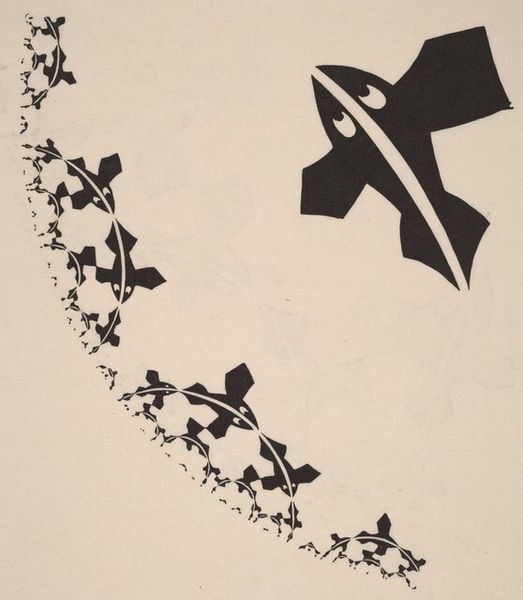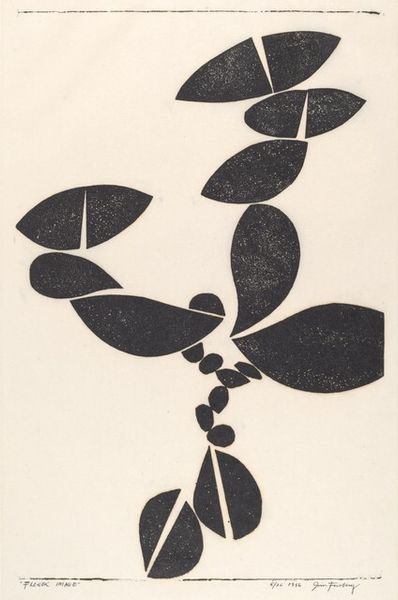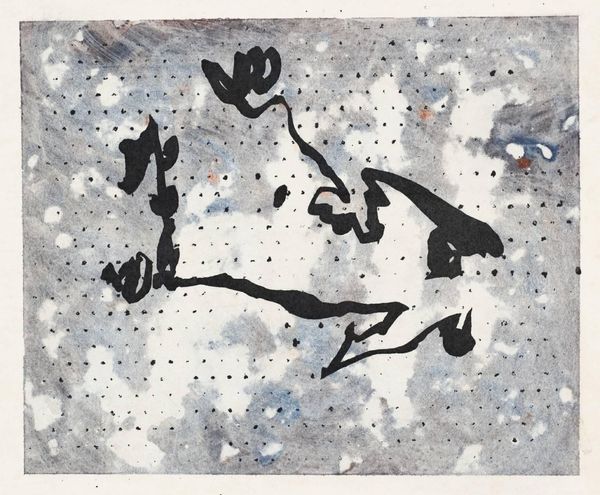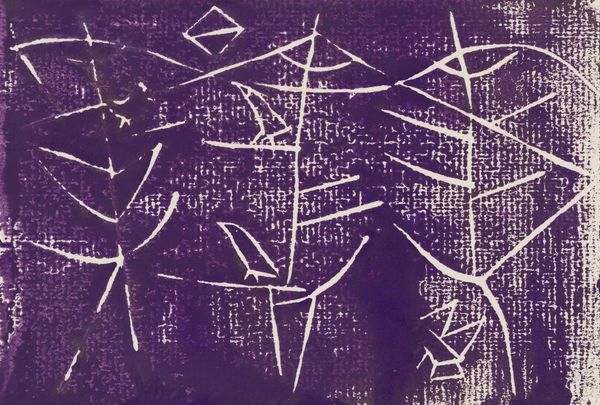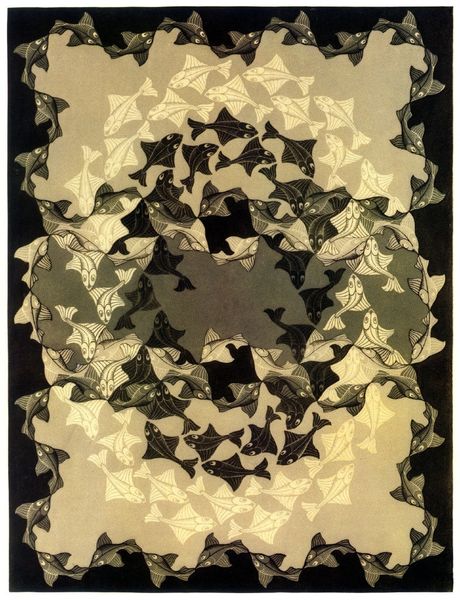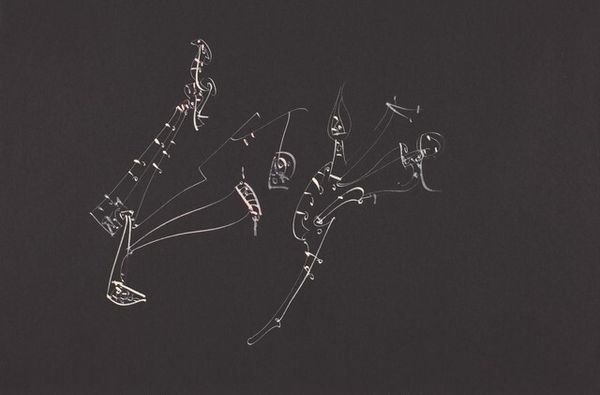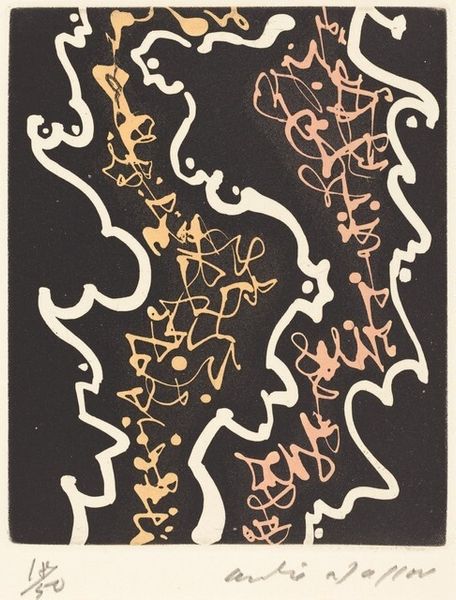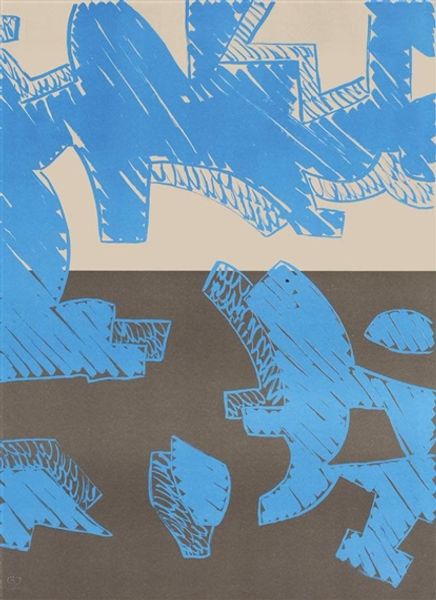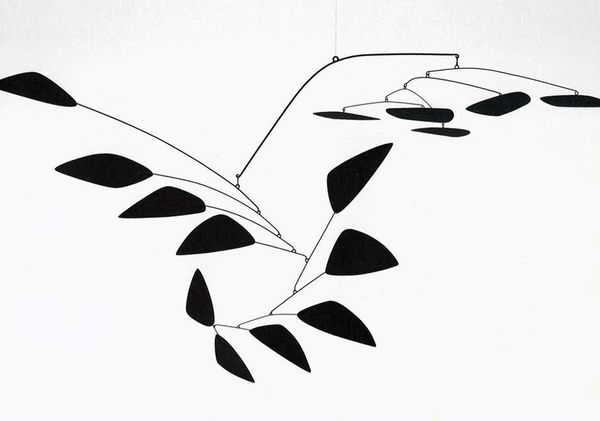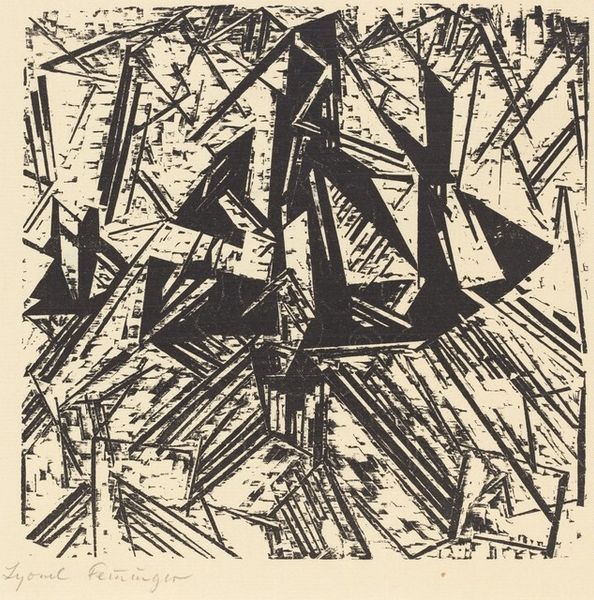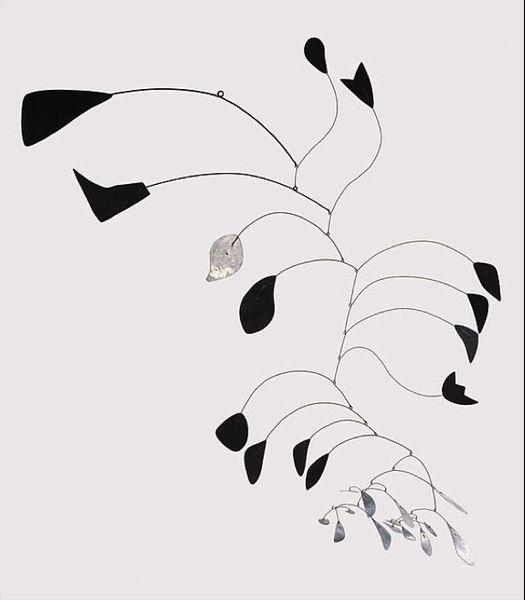
Dimensions: sheet: 31.2 x 32 cm (12 5/16 x 12 5/8 in.)
Copyright: National Gallery of Art: CC0 1.0
Editor: This is M.C. Escher's "Circle Limit III," created in 1959. It's a linocut print, and my first thought is...wow, it's so intricate! I am completely captivated by how the repeating shapes shrink and change. What do you see in this piece? Curator: Ah, Escher! He invites us into such peculiar worlds. For me, "Circle Limit III" is a dance between mathematics and art, a glimpse into infinity cleverly bound within a circle. Those repeated motifs are, in fact, fish. Editor: Fish? Oh, I see it now! I was too focused on the geometry to notice. What's with the shrinking though? Curator: It's an example of hyperbolic geometry. Escher was fascinated by these non-Euclidean spaces, where parallel lines diverge. He represents this divergence by making the fish smaller the closer they get to the edge of the circle, but they are all, in fact, the same size in their hyperbolic world. Pretty wild, huh? How does this mathematical wizardry hit you? Editor: It blows my mind! It makes you wonder if Escher was less artist and more like...a mathematical mystic or something. Did the math inform his artistic choices or vice versa? Curator: It was truly symbiotic! He wasn't a mathematician himself but he collaborated with mathematicians. He sought to visually express these mathematical concepts he was learning, these new ways of envisioning space. Editor: That's so cool. It's made me think about the hidden structures that underpin what we perceive as reality. Curator: Exactly. Escher isn't just making pretty pictures, is he? He is pushing the boundaries of perception. I always feel like a math class snuck into my museum trip with Escher.
Comments
No comments
Be the first to comment and join the conversation on the ultimate creative platform.
